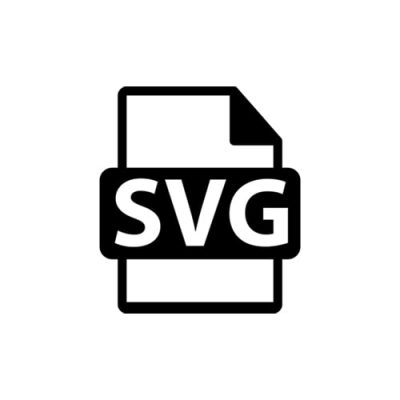What is SVG?
SVG stands for Scalable Vector Graphics which is an XML based graphics file format. This two-dimensional file format is developed by World Wide Web Consortium. SVG is mainly used for sharing graphics contents on the web. It is considered suitable for the web because it can be indexed, searched, scripted, and compressed. Not just that, but SVG files are also supported by web browsers including Google Chrome, Opera, Firefox, Internet Explorer and every other browser that has the ability to render SVG images. These type of graphics files are also supported by high-end graphics editors and text editors.
Now that you know what is SVG, let’s take a look into the details that you may find useful. In this article, we will discuss everything that you need to know about SVG.
Why should you use SVG?
SVG is basically a vector graphic format which is based on XML. This is mainly used to display a wide variety of images and graphics on the net.
SVG files are simple text files that are known to describe shapes, curves, lines, text, and colors. One of the benefits of SVG is that it is readable by humans. Not just that, but it also easy to understand and modify. In addition, it can also be manipulated using JavaScript or CSS. This is what makes the file format more versatile and flexible than any other type of file formats such as PNG, JPGs or GIF.
SVG happens to be a W3C standard. This basically means that it can interoperate easily with other technologies and languages. This includes DOM, CSS, HTML and JavaScript. With the use of SVG file format, many of the vexing issues related to modern day web development can be solved. Here are some of the main reasons why you should use SVG.
Responsiveness and scalability
SVG is known to make use of numbers, shapes, and coordinates in order to render graphics in the browser. This makes the resolution infinitely scalable and at the same time also independent. With the help of SVG, you can combine various paths, text elements, and shapes in order to create different types of visuals.
File formats such as JPG, PNG, and GIF comes with fixed dimensions which results in pixelated images.
Performance
SVG happens to be one of the most important aspects affecting the performance of the web with the size of the files used on the web page. In comparison to raster-based graphics, SVG files are much smaller in size.
Accessibility
SVG files are not only text-based but they can also be indexed and searched easily. This makes it redeemable by search engines, screen readers and other devices.
Interactivity and programmability
Another reason why SVG is more preferred is that it is completely scriptable and editable. You can add all types of interactions and animations to a drawing with the help of JavaScript or CSS.
Use Cases and Browser Support
One of the main benefits of using SVG file format is because it comes with a number of use cases. Having said that, now let’s check out some of the most important use cases.
Logos and icons
Regardless of the size, logos and icons are supposed to be sharp. SVG icons are any day more accessible and also very easy to position.
Animations
With the help of SVG, you can create any type of animation you want. Not just that, but you can also include a special type of animations. In addition, SVG has the ability to interact with SMIL animation and CSS animation.
Illustration and diagrams
Any drawing that is made with a pencil or pen can be translated easily into the SVG file format.
Special effects
Using the SVG file format, you can also achieve many live effects. This may include various gooey effects and shape morphing.
Interactivity
You can also use SVG in order to update and plot data dynamically. This can be done based on some events and user actions.
Building applications and interfaces
SVG also allows you to make amazing interfaces and even incorporate them with web-based applications, HTML5, and rich internet applications.
Benefits of using SVG files
By using the SVG file type, you can avail several benefits. The main benefits of using SVG file can be summed into the following points.
SEO friendly
As you may already know SEO images are known to be defined in SML text files. This means that you can make use of descriptions and words that can be recognized by search engines. But this is not the case with raster-based images.
Small file size
Images that are based on pixels are usually saved at a large size. This is because you can avail the quality when you make the image smaller. This is known to have an impact on the downloading speed of the site. In order to avoid this from happening, you can make use of SVG files which are scalable and thus, it has a very compact files size.
Easily editable
Another big advantage of working with SVG is that it can be edited quite easily. You can make use of any of the popular vector graphics editing software in order to get your work done.
Scalability
One of the many advantages of vector images is that it is resolution-independent and thus, it can scale any dimension without compromising on the quality. Browsers only do the calculation behind the picture so that there is no distortion. On the other side, raster-based images tend to drop their resolution when they are zoomed in. This happens when the small pixels are enforced to expand more than the original size of the image.
Interactivity
With the help of SVG file format, you can add any type of animation you want using scripting or styling.
Thus, from the above discussion, it can be concluded that the SVG file format is the most preferred vector file format. In comparison to raster images, it has a lot of benefits to offer.



